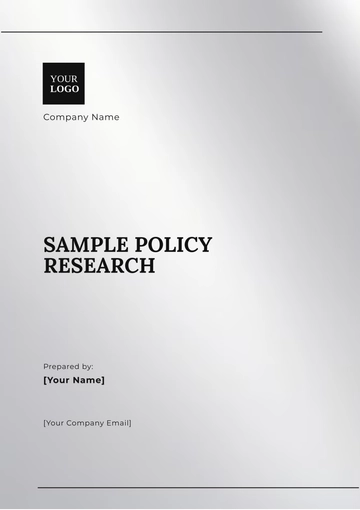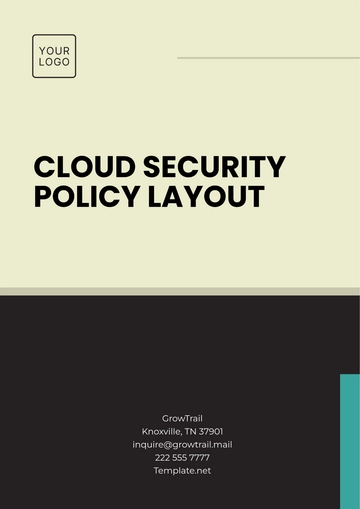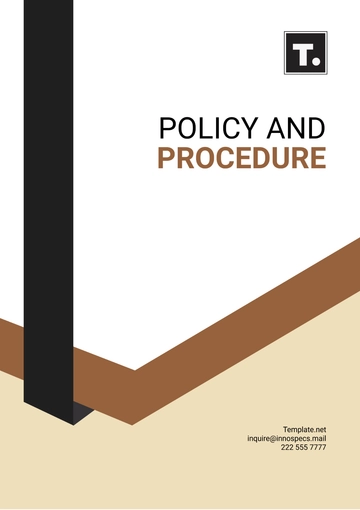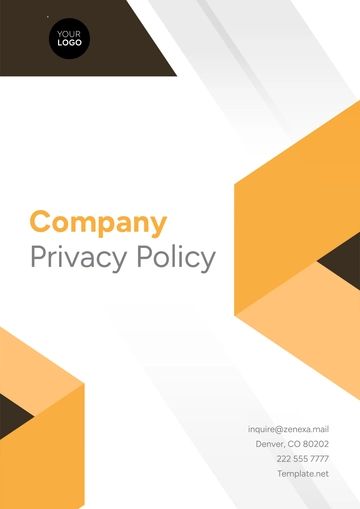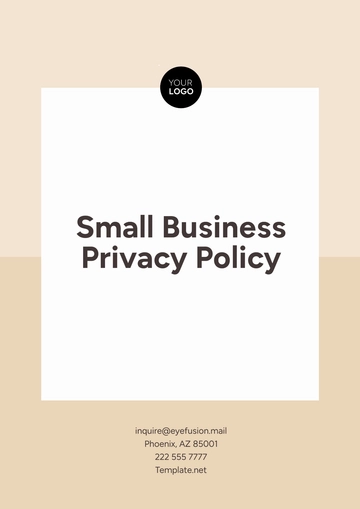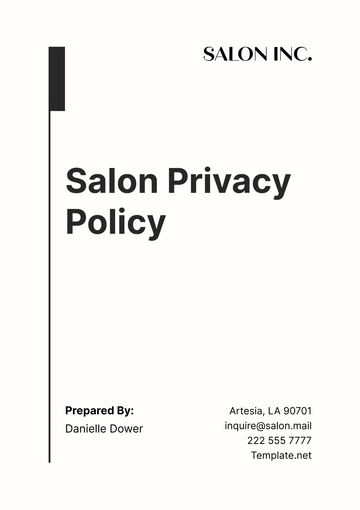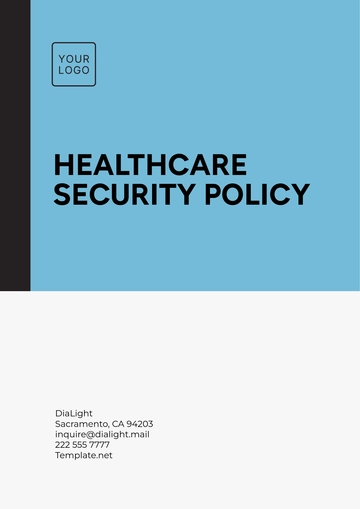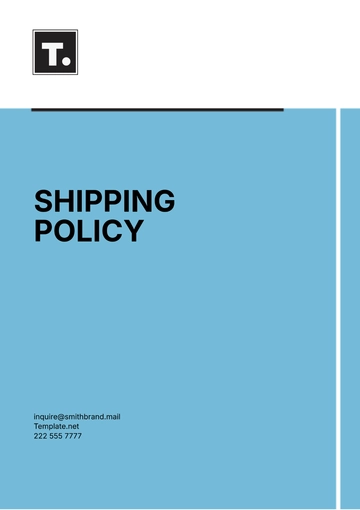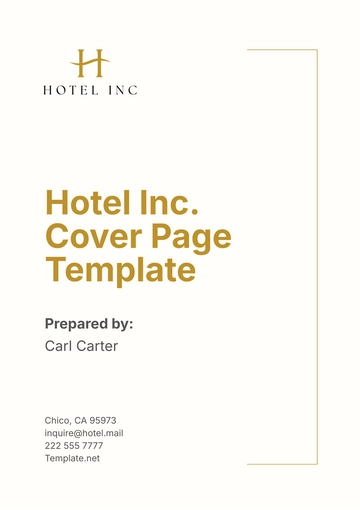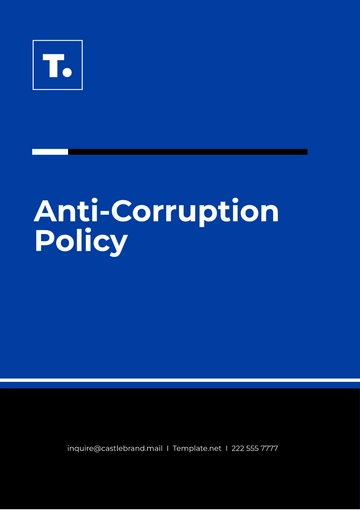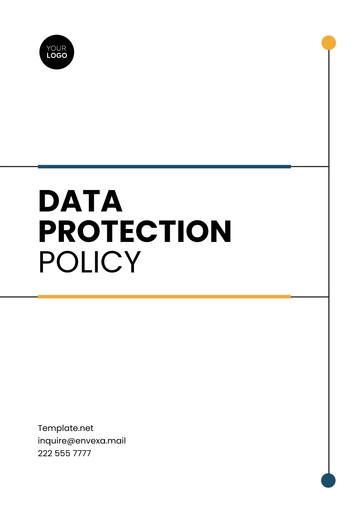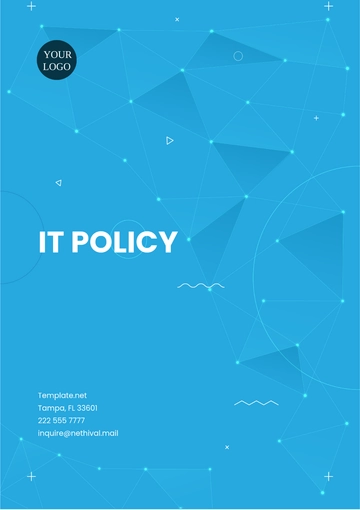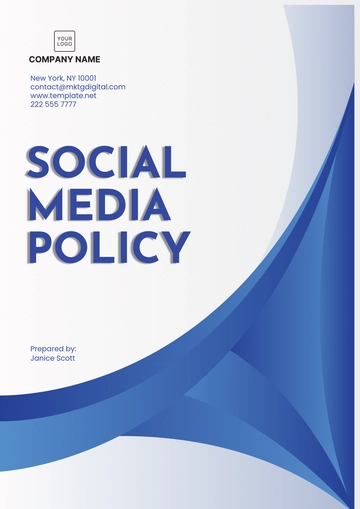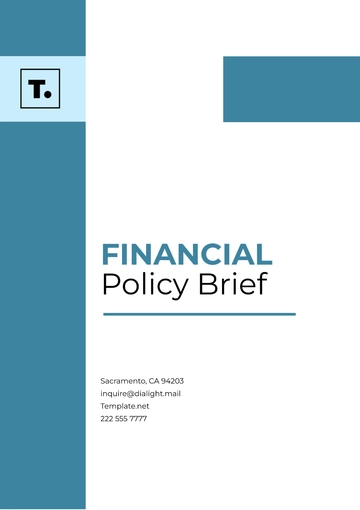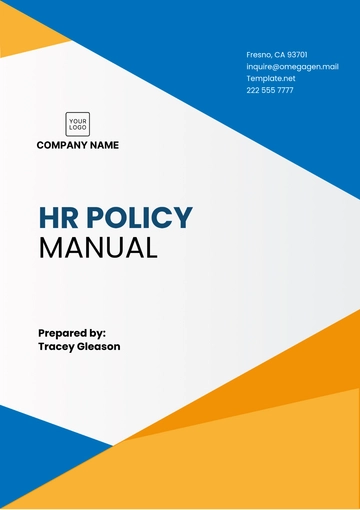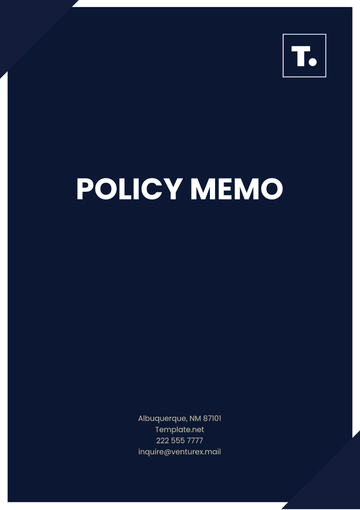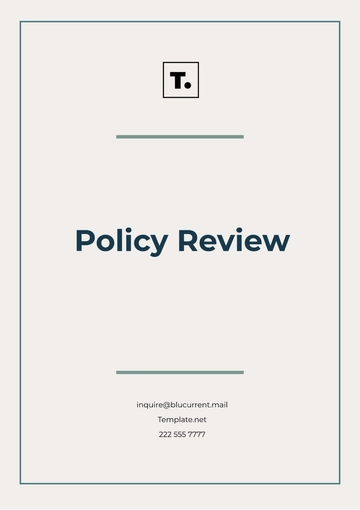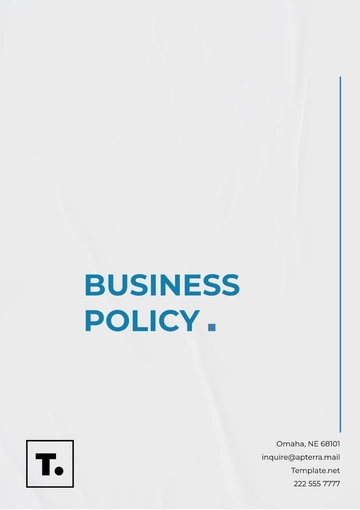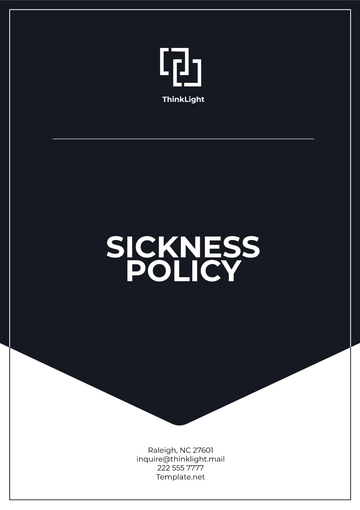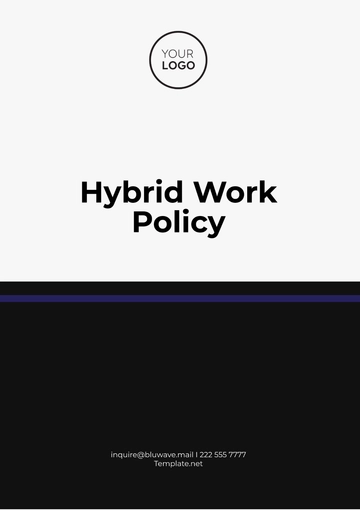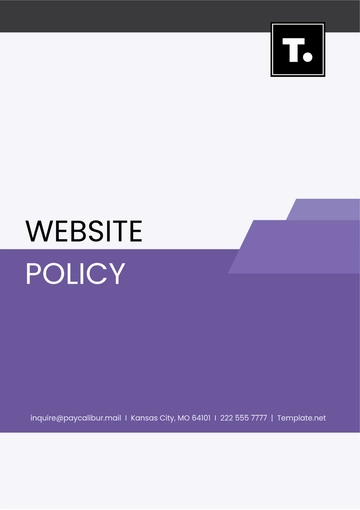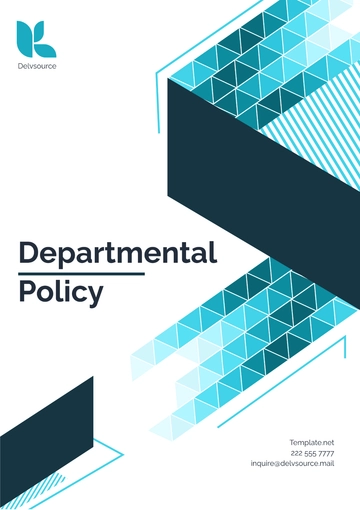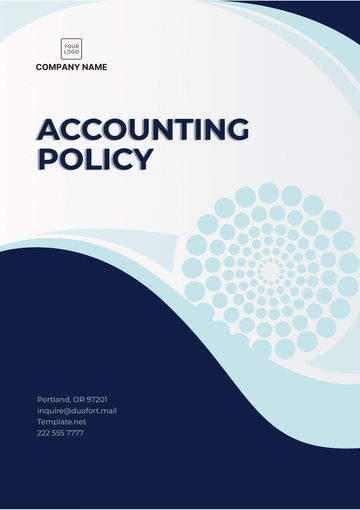Free Media Policy
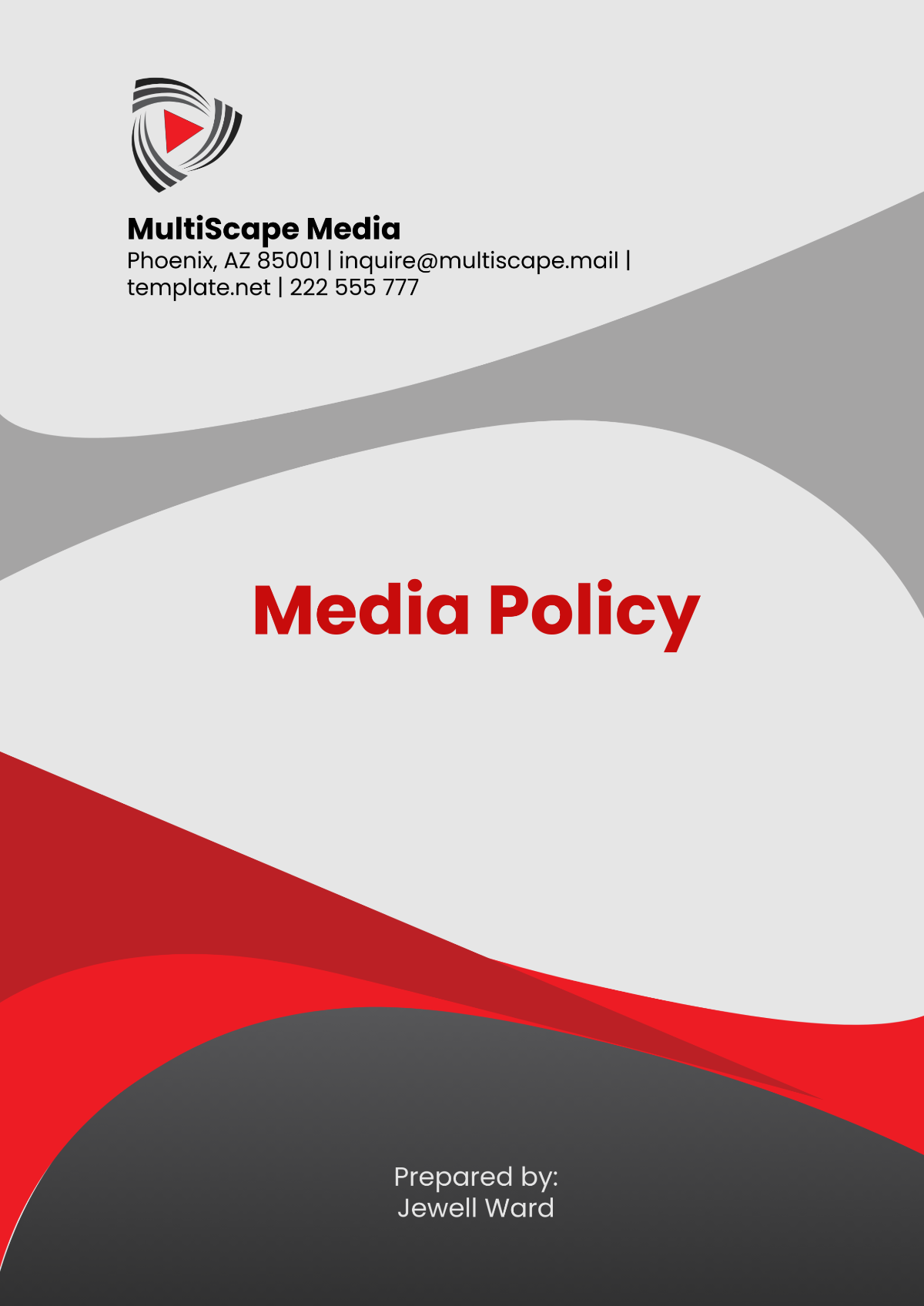
I. Introduction
The role of media in shaping public opinion, influencing decisions, and shaping the corporate narrative has only grown in significance. With the rise of digital platforms, social media networks, and an increasingly interconnected world, [Your Company Name] recognizes the critical importance of maintaining a clear, consistent, and professional approach to all forms of media communication. As an organization, we must adapt to this rapidly evolving landscape while safeguarding our values, reputation, and the trust of our stakeholders.
This Media Policy is designed to ensure that all interactions with external and internal media are conducted with professionalism, transparency, and strategic alignment. Whether dealing with traditional press inquiries or social media engagements, this policy serves as a guide for [Your Company Name]'s employees, stakeholders, and representatives to navigate these interactions in a manner that is in line with our core values and business objectives.
II. Objectives of the Media Policy
The primary objectives of the Media Policy are:
Ensure Consistent and Professional Messaging: One of the key goals of this policy is to establish uniformity and professionalism in all media communications. This ensures that all external messages, whether in a press release, social media post, or interview, reflect the company’s values and key business priorities.
Protect Confidentiality and Proprietary Information: As part of our corporate responsibility, [Your Company Name] must take every step to protect sensitive information that could harm our competitive position, operational security, or public image. This policy emphasizes the importance of safeguarding intellectual property, financial data, and confidential operational strategies.
Foster Positive Media Relations: Engaging with the media in a respectful, responsive, and strategic manner will build long-term, positive relationships. By proactively engaging with media, we can shape our public narrative and positively influence stakeholder perceptions.
Define Clear Roles and Responsibilities: Clear definitions of who is authorized to speak on behalf of the company help ensure that the right voices represent [Your Company Name] in media interactions. This policy also sets out the expectations for employees and representatives when handling media inquiries.
Establish Crisis Communication Protocols: When crises occur, quick, transparent, and measured responses are critical. This policy outlines the procedures and guidelines for responding to crises that may attract media attention.
III. Scope
This policy applies to:
Employees, Contractors, and Stakeholders: All employees, contractors, consultants, and anyone with direct or indirect involvement in the media engagement process must adhere to this policy. This includes those engaged in press interviews, handling customer complaints via media channels, or speaking publicly on behalf of the company.
External Communications: This policy encompasses all forms of external communication, including press releases, interviews, product launches, and any social media interactions that reflect the organization.
Internal Communications: This policy also covers internal communications that may eventually become public, such as newsletters, employee statements, and internal reports that could be leaked or disseminated externally.
IV. Media Communication Guidelines
A. Authorized Spokespersons
Primary Spokespersons:
The Chief Executive Officer (CEO), Chief Communications Officer (CCO), and Chief Marketing Officer (CMO) are the primary points of contact for media inquiries concerning high-level company strategy, financial performance, or major corporate announcements. These individuals have the ultimate authority and responsibility for ensuring that communications align with corporate objectives and messaging strategies.Departmental Representatives:
While the top executives handle critical strategic issues, other employees with subject-matter expertise may be authorized to handle specific media inquiries. For instance, the head of product development might engage with journalists about technical innovations, or the head of customer service may respond to media inquiries about customer satisfaction or service improvements. However, all departmental representatives must coordinate their responses with the communications team to ensure consistency and appropriateness.Training and Preparedness:
Regular media training is mandatory for all authorized spokespersons. This training includes techniques for staying on-message during interviews, responding to challenging or hostile questions, and recognizing when to refer a journalist to a more appropriate colleague or department. Training should be updated annually and tailored to reflect emerging trends in media engagement, including the latest tools for social media communication, podcasting, and video interviews.
B. Media Interaction Protocol
Pre-Approval Process:
Before engaging with any media representative, employees must seek approval from the communications team. This includes interviews, media inquiries, or public statements. The communications team will review the content to ensure it aligns with company policy and strategic objectives. Approval should be obtained at least [72] hours before any scheduled interaction to allow for thorough preparation.Guidelines for Interviews:
In interviews, employees must stick to the approved talking points, avoid providing speculative comments, and refrain from disclosing confidential or sensitive information. Spokespersons should never comment on rumors or unverified reports. In cases where employees are unsure about a question, they should politely redirect the journalist to the communications team for clarification.Post-Interaction Reporting:
After any media interaction, spokespersons are required to submit a detailed report to the communications team within [48] hours. This report should include the journalist’s questions, the responses provided, and any other relevant context that may influence subsequent company communications.
V. Social Media Policy
A. Official Accounts Management
Social Media Ownership and Control:
All official [Your Company Name] social media accounts, including those on platforms like Facebook, LinkedIn, Twitter, and Instagram, are owned and operated by the communications team. These accounts must be managed by authorized personnel to ensure that only appropriate, company-approved content is shared.Content Creation and Approval:
All posts made on official social media channels must go through a content approval process. Content creation must be aligned with the company’s marketing objectives, brand voice, and business goals. The social media manager is responsible for ensuring that content is timely, relevant, and legally compliant.Security and Access Control:
Multi-factor authentication (MFA) must be enabled on all official social media accounts, and passwords should be updated every [3] months to ensure the security of these channels. Access to social media accounts should be restricted to authorized personnel only, and all employees responsible for these accounts should undergo periodic security training to prevent breaches.
B. Employee Social Media Conduct
Clear Distinction Between Personal and Professional Posts:
Employees are reminded that personal social media profiles should not be used to represent [Your Company Name], and opinions posted on personal social media accounts should not be construed as official company statements. It is critical that employees clearly distinguish their personal views from those of the organization, particularly in posts related to industry issues, competitors, or company operations.Guidelines for Social Media Interaction:
Employees should avoid making any negative or disparaging remarks about [Your Company Name] on social media platforms, even in personal contexts. When engaging in discussions that may involve the company, employees should exercise restraint and professionalism. For instance, if an employee feels compelled to express concerns or dissatisfaction, they are encouraged to approach internal channels such as HR or the internal communications team, rather than airing grievances publicly.Monitoring and Enforcement:
The communications team will regularly monitor public social media platforms to identify any potential violations of this policy. Employees who fail to comply with these social media guidelines may face disciplinary action, which can include additional training, formal warnings, or even termination in severe cases.
VI. Crisis Communication
A. Crisis Response Team
Team Composition:
The Crisis Communication Team will be composed of key personnel from various departments, including representatives from communications, legal, human resources, and operations. Each member plays a distinct role, ensuring that all aspects of the crisis are addressed in a comprehensive, unified manner.Crisis Management Roles:
The communications representative will handle media interactions, ensuring that the message is clear and consistent across all platforms.
Legal personnel will advise on the potential legal ramifications of statements made to the media.
HR will manage any internal communications, especially if the crisis impacts employees directly.
B. Crisis Communication Plan
Notification Protocol:
Employees who identify a potential crisis situation, whether internal or external, must notify the communications team immediately. The communication team will initiate the crisis communication plan within [2] hours of notification, conducting an internal assessment of the situation before issuing any public statements.Response Strategy:
The communications team will issue an initial holding statement to the media within [2] hours of the crisis, providing the necessary facts without making any definitive statements. Additional updates will be provided regularly to maintain transparency and avoid speculation. A dedicated crisis hotline may be set up to address media inquiries directly and mitigate confusion.Post-Crisis Evaluation:
After the crisis is resolved, the communications team will conduct a thorough review of the response, including the effectiveness of media engagement and any lessons learned. A report will be prepared and shared with key stakeholders, offering a roadmap for future improvements in crisis management.
VII. Confidentiality and Information Security
A. Protecting Proprietary Information
Confidential and Sensitive Data:
Employees must understand the importance of keeping sensitive information confidential, including financial data, product development plans, and proprietary research. Any unauthorized disclosure could result in significant harm to the company’s market position or customer trust.Non-Disclosure Agreements (NDAs):
All employees involved in media communications or who may handle confidential information must sign an NDA. These agreements must be updated regularly, particularly when employees change roles or move between departments with access to new sets of information.
B. Media Queries on Sensitive Topics
Handling Sensitive Inquiries:
Journalists may occasionally inquire about sensitive or potentially damaging topics such as ongoing lawsuits or internal issues. Employees must refrain from answering these questions directly and instead refer the inquiry to the legal or communications department, which will determine the appropriate response.Template for Sensitive Responses:
In cases where inquiries touch on sensitive matters, employees should use the following response template:"We cannot provide comment on this matter at this time, but we will issue a statement when appropriate."
VIII. Media Training and Development
A. Annual Media Training
Training Objectives:
The primary aim of annual media training is to equip employees with the skills to interact with journalists, maintain composure during interviews, and convey the company’s message effectively. Training also includes techniques for handling hostile or unanticipated questions with poise and professionalism.Media Training Content:
Crafting clear, concise messaging.
Avoiding legal pitfalls and protecting confidential information.
Managing high-pressure interviews and crisis scenarios.
B. Continuous Learning
Workshops and Seminars:
In addition to the annual media training, employees will be encouraged to participate in quarterly workshops that explore emerging media trends, such as the rise of influencer marketing, podcasts, and new social media platforms.Feedback and Improvements:
After each training session, feedback will be solicited from participants to ensure that future media training sessions continue to meet the evolving needs of the organization.
IX. Governance and Compliance
A. Policy Review
Frequency of Review:
The Media Policy will undergo a comprehensive review every year to ensure that it remains in line with industry best practices and regulatory requirements. Additionally, any significant organizational or external changes—such as shifts in media consumption patterns or changes in government regulations—will trigger a policy review.Amendments:
Any amendments to this policy must be approved by [Your Company Name]'s executive board and communicated to all employees promptly. Changes will be made in response to both internal and external factors and will be designed to improve the overall effectiveness of media relations.
B. Violations and Enforcement
Disciplinary Actions:
Employees who violate this policy may face disciplinary actions ranging from a verbal warning for minor infractions to termination for severe breaches such as the unauthorized disclosure of confidential information.Reporting Mechanisms:
Employees are encouraged to report any violations of this policy using the company’s confidential Ethics Hotline. All reports will be investigated promptly and thoroughly, and appropriate action will be taken.
X. Monitoring and Reporting
A. Media Monitoring Tools
Tracking Media Coverage:
[Your Company Name] will invest in media monitoring platforms that allow us to track mentions across news outlets, blogs, social media channels, and other relevant platforms. These tools will help the company measure the tone of coverage and gauge public sentiment toward the company.Key Performance Indicators (KPIs):
The effectiveness of our media relations will be assessed through key metrics, including the number of positive and negative media mentions, the reach of our media engagements, and the engagement rates on social media posts.
B. Quarterly Reporting
Report Contents:
Quarterly media reports will include data on media interactions, a breakdown of positive and negative media coverage, and an analysis of public sentiment. These reports will also provide recommendations for adjusting the media strategy, based on the data collected.Sample Report Chart:
Quarter | Positive Mentions | Negative Mentions | Engagement (%) |
|---|---|---|---|
Q1 2050 | 200 | 15 | 85 |
Q2 2050 | 225 | 10 | 90 |
Q3 2050 | 240 | 8 | 92 |
Q4 2050 | 260 | 5 | 95 |
XI. Conclusion
The Media Policy is a crucial framework that governs [Your Company Name]’s approach to all media interactions, whether dealing with the press, social media, or other external communications channels. By establishing clear guidelines, roles, and responsibilities, this policy ensures that our communications remain professional, on-brand, and consistent with our corporate values. As we continue to adapt to the evolving media landscape, this policy will be reviewed regularly and updated as necessary to reflect industry trends and internal developments. The commitment to media excellence is a long-term investment that will benefit the reputation and growth of [Your Company Name] well into the future.
- 100% Customizable, free editor
- Access 1 Million+ Templates, photo’s & graphics
- Download or share as a template
- Click and replace photos, graphics, text, backgrounds
- Resize, crop, AI write & more
- Access advanced editor
Set clear guidelines for media engagement with the Media Policy Template from Template.net. This editable and customizable template ensures consistent communication and branding. Use the AI Editor Tool to tailor the policy to your organization’s media strategy.
You may also like
- HR Policy
- Restaurant Policy
- Company Policy
- Accounting Policies and Procedures
- Website Policy
- Privacy Policy
- Safety Policy
- School Policy
- IT and Software Policy
- Law Firm Policy
- Construction Policy
- Interior Design Policy
- Travel Agency Policy
- Education Academic Policy
- Security Policy
- Real Estate Policy
- Expense Policy
- Software Policy
